Fort Bragg: From Lumber Town to Enchanting Coastal Escape
Exploring Fort Bragg's Enchanting Downtown
Fort Bragg, California, has a rich history deeply interwoven with the logging industry. Founded in 1857, the town was important in transporting lumber during the late 19th and early 20th centuries; it became a significant lumber port. Although the industry declined in recent decades, Fort Bragg successfully transitioned into a gorgeous tourist destination. Wandering through Fort Bragg’s charming downtown is like stepping back in time. The classic grid layout offered a delightful walk past locally owned shops, restaurants, and art galleries.
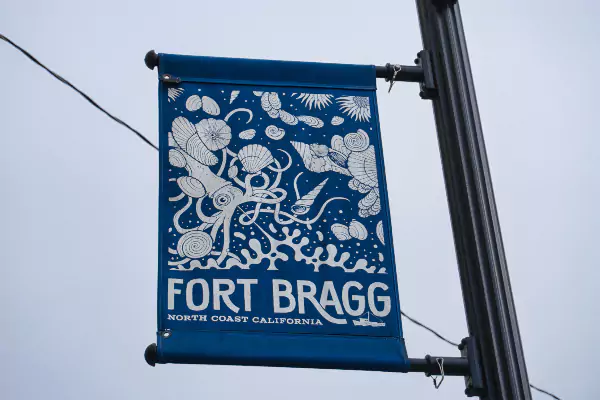
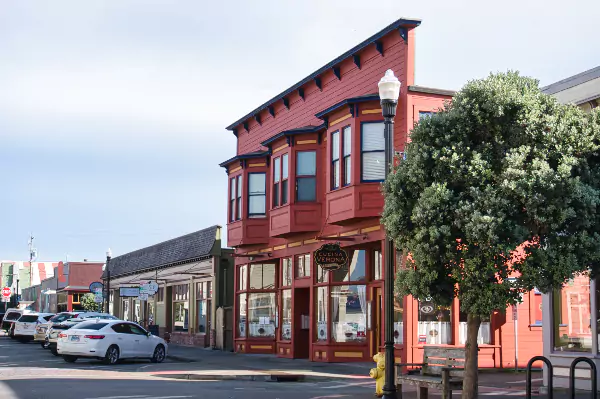
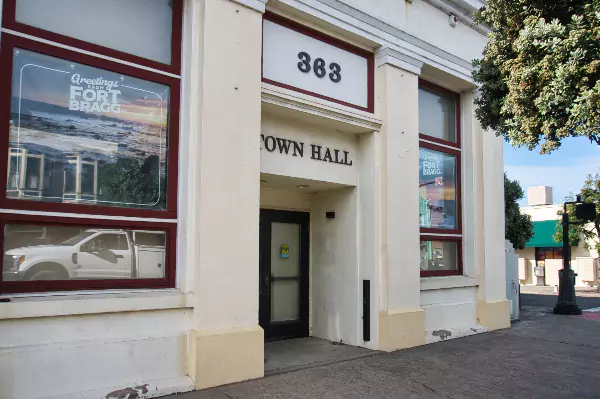
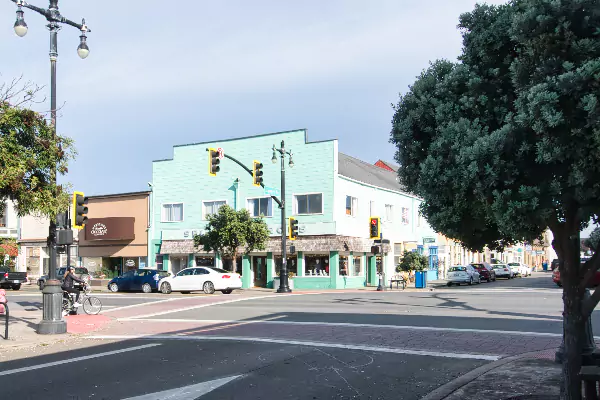
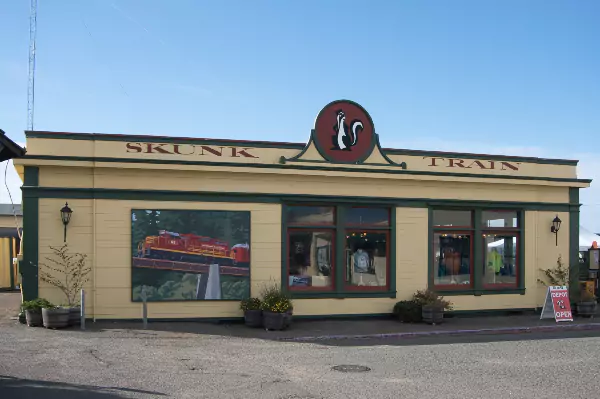
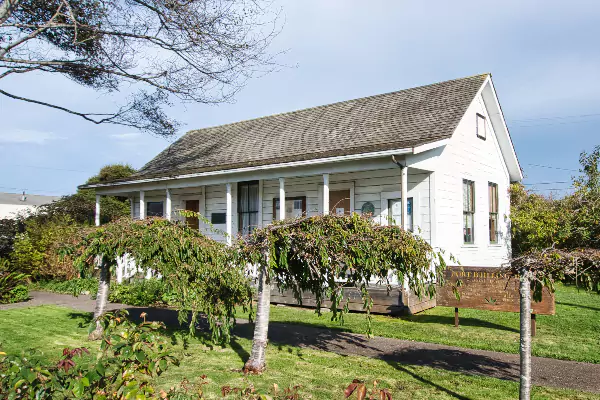
Fort Bragg’s historic steam train originally hauled lumber. Today, it takes passengers on a scenic journey through the awe-inspiring redwood forests. The train’s name, “Skunk,” is a playful reference to the not-so-pleasant aroma of the early steam engines. Sadly, the train did not run during our stay in Fort Bragg, so we missed the scenic journey through the redwoods. Building 1857 is the oldest building in Mendocino County. It was a military hospital, but today, this historical landmark hosts art exhibits and community events.
Fort Bragg's Glass Beach: A Disappearing Treasure?
The Glass Beach Trail led us to MacKerricher State Park’s famous Glass Beach. It’s hard to imagine that this captivating stretch of coastline was once a dumping ground for bottles and all sorts of trash (from 1906 to 1967). Years of relentless waves crashing against the shore have worked magic, transforming glass pieces into mesmerizing colored pebbles.
.
Ignoring the signs to pick up the glass, other tourists couldn’t resist filling their pockets with these unique souvenirs. So, sadly, the beach seemed empty. Only a few glass pebbles were scattered here and there, a mere fraction of what must have been a breathtaking collection.
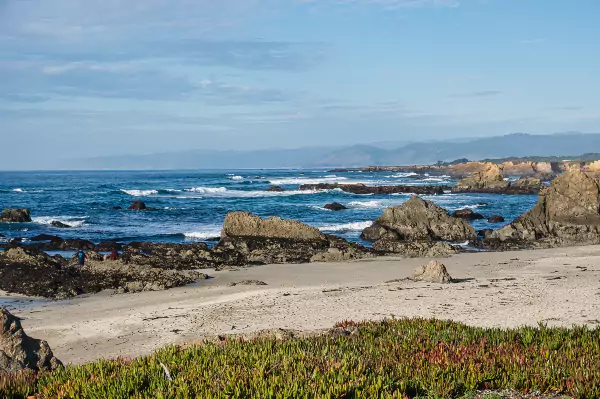
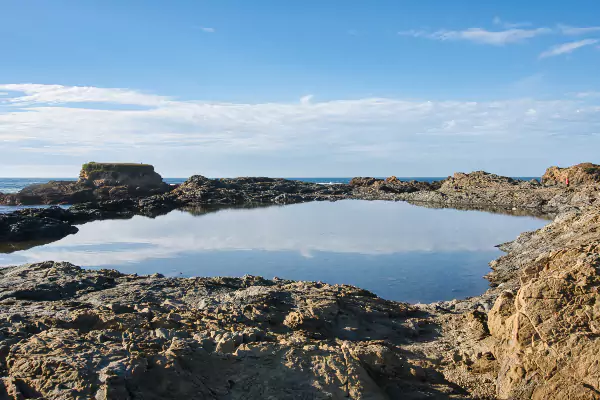
The Shesbo Trestle: A Colossus of Wood and Engineering Marvel
The Shesbo Trestle, a colossal wooden railroad bridge built in the late 19th century, was a crucial part of the logging railroad system. It allowed trains loaded with timber from the inland forests to the mills on the coast. This trestle bridge was essentially an elevated way, making crossing the Big River Canyon possible. At a staggering 73 feet high and 714 feet long, it’s one of the largest wooden trestles ever built in California. Today, the Shesbo Trestle is a famous landmark and walking bridge.
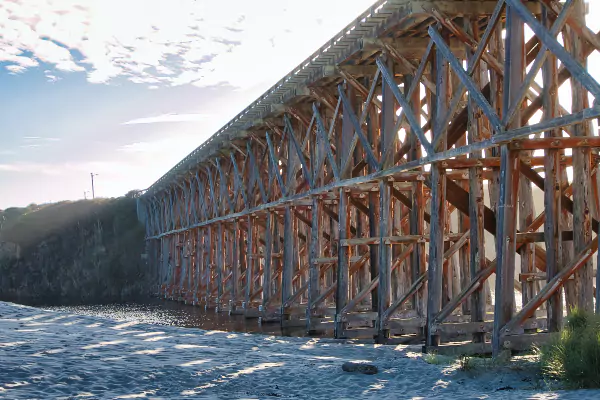
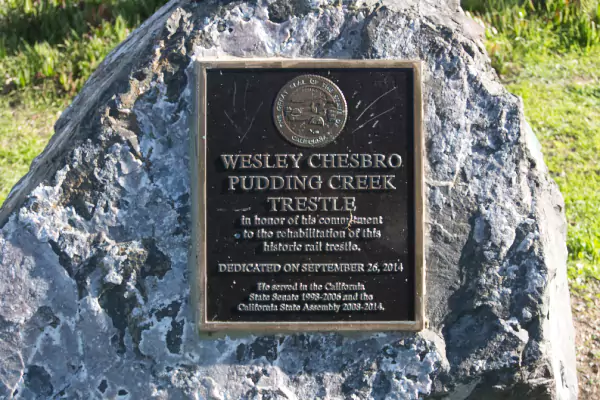
Date
Thursday, November 9, 2023
Distances
1.61 miles
3.12 miles
Moving Time
0:37:54 hours
1:12:38 hours
Weather
67 °F, light breeze, partly cloudy
